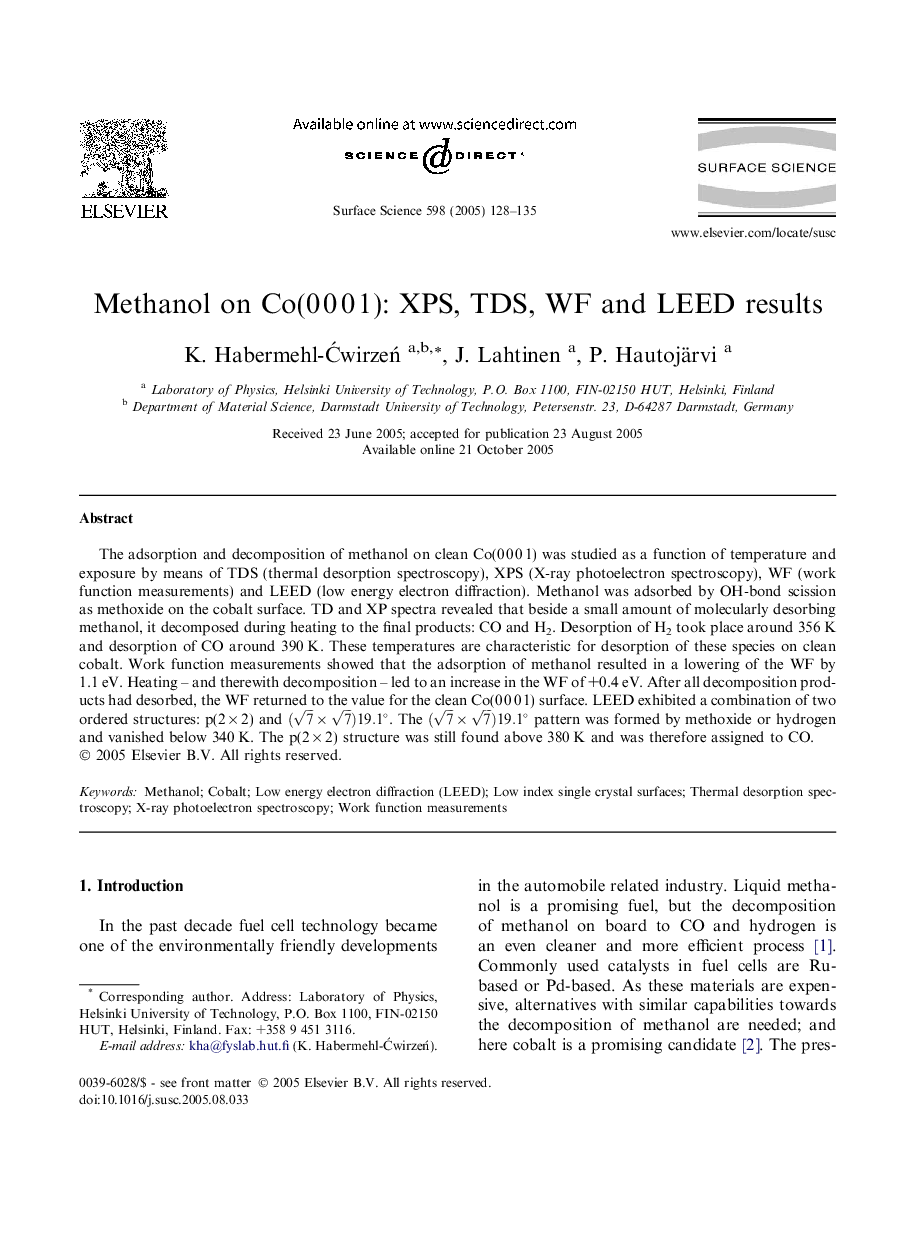| Article ID | Journal | Published Year | Pages | File Type |
|---|---|---|---|---|
| 9594997 | Surface Science | 2005 | 8 Pages |
Abstract
The adsorption and decomposition of methanol on clean Co(0 0 0 1) was studied as a function of temperature and exposure by means of TDS (thermal desorption spectroscopy), XPS (X-ray photoelectron spectroscopy), WF (work function measurements) and LEED (low energy electron diffraction). Methanol was adsorbed by OH-bond scission as methoxide on the cobalt surface. TD and XP spectra revealed that beside a small amount of molecularly desorbing methanol, it decomposed during heating to the final products: CO and H2. Desorption of H2 took place around 356 K and desorption of CO around 390 K. These temperatures are characteristic for desorption of these species on clean cobalt. Work function measurements showed that the adsorption of methanol resulted in a lowering of the WF by 1.1 eV. Heating - and therewith decomposition - led to an increase in the WF of +0.4 eV. After all decomposition products had desorbed, the WF returned to the value for the clean Co(0 0 0 1) surface. LEED exhibited a combination of two ordered structures: p(2 Ã 2) and (7Ã7)19.1°. The (7Ã7)19.1° pattern was formed by methoxide or hydrogen and vanished below 340 K. The p(2 Ã 2) structure was still found above 380 K and was therefore assigned to CO.
Keywords
Related Topics
Physical Sciences and Engineering
Chemistry
Physical and Theoretical Chemistry
Authors
K. Habermehl-ÄwirzeÅ, J. Lahtinen, P. Hautojärvi,
